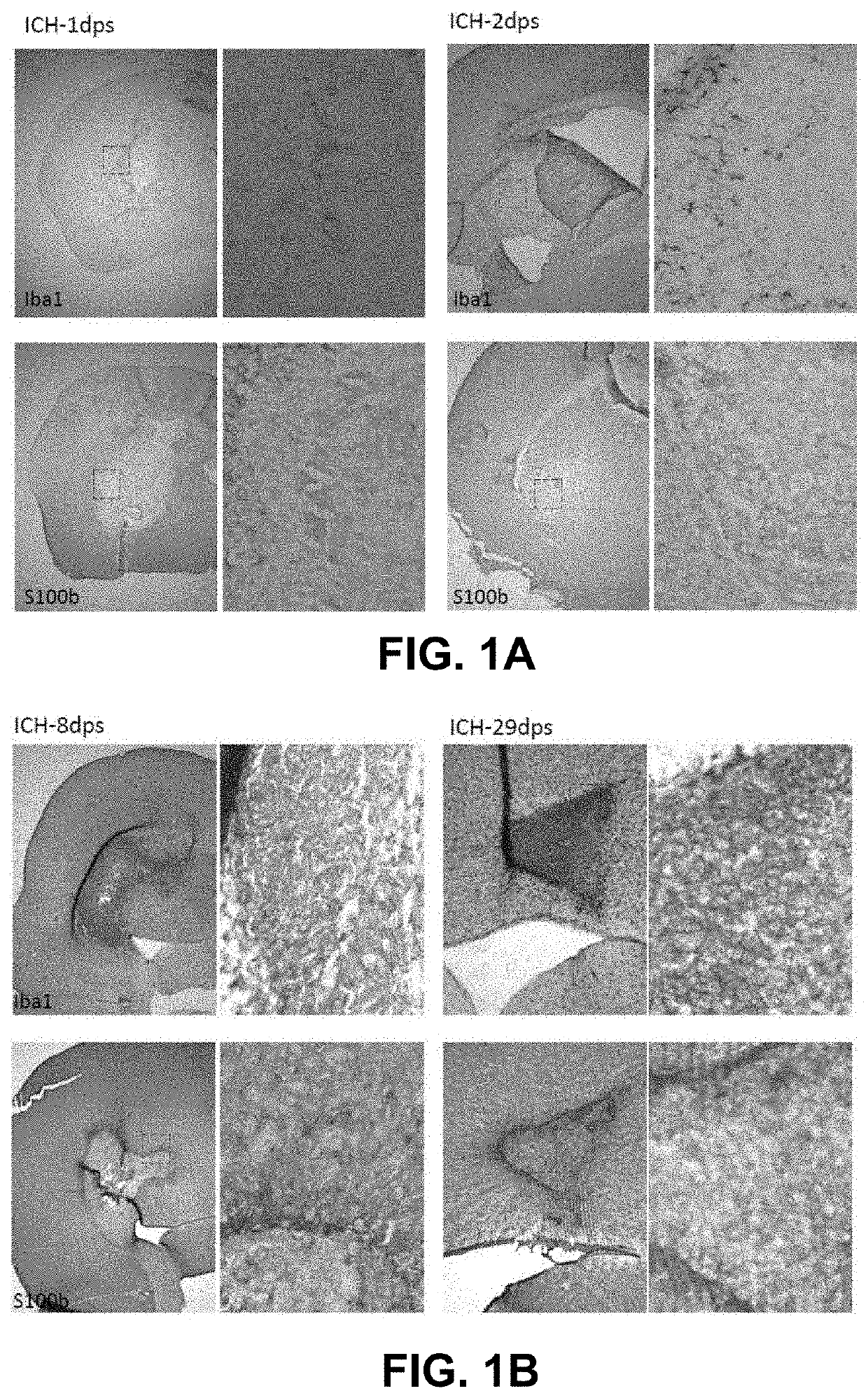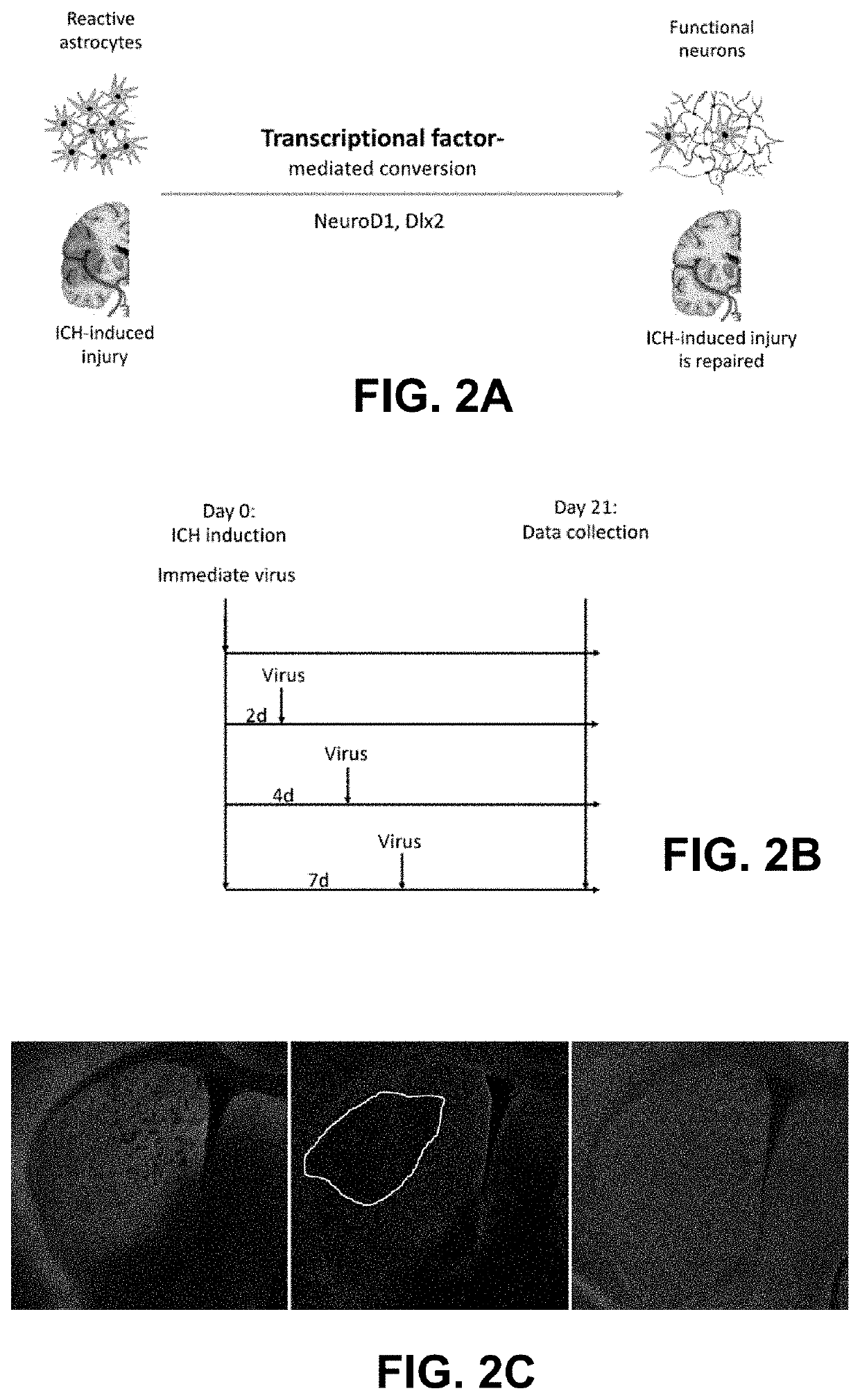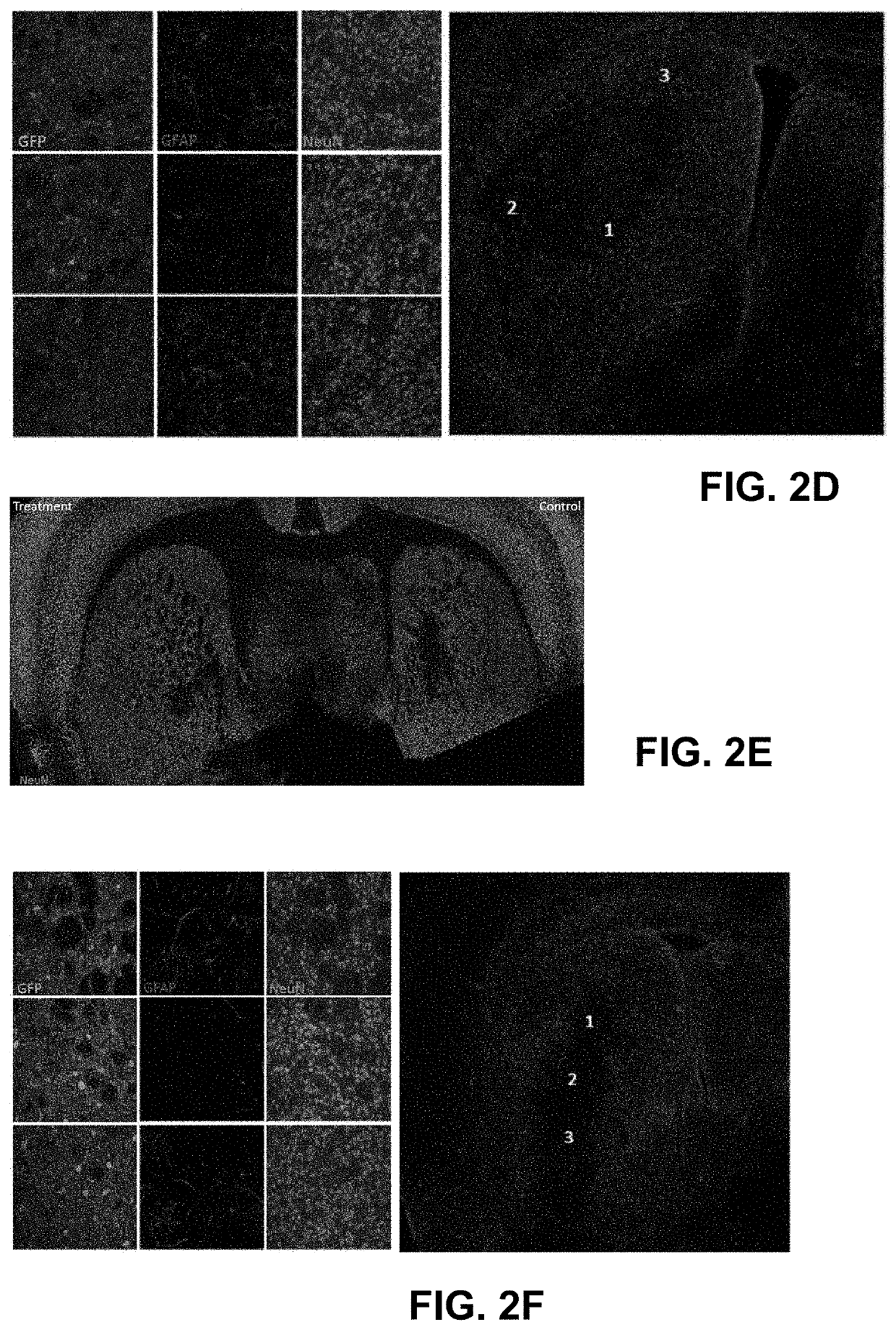Regenerating functional neurons for treatment of hemorrhagic stroke
- Summary
- Abstract
- Description
- Claims
- Application Information
AI Technical Summary
Benefits of technology
Problems solved by technology
Method used
Image
Examples
example 1
[0151]0.2 μL collagenase was injected to mouse striatum. After 1 day, 2 days, 8 days, and 29 days, data were collected, and DAB and iron staining were conducted. FIG. 1A-1B showed the Iba1 and S100b DAB staining with iron staining from 1 day to 29 days post induction of ICH.
[0152]These results showed the morphological changes of astrocytes and microglia after ICH as well as the process of accumulation of ferric iron. These results provided a reference to choose time points to intervene to treat ICH.
example 2
onversion of Reactive Astrocytes to Neurons in a Mouse Model of Intracerebral Hemorrhage (Short Term)
[0153]A set of experiments was performed to assess the in vivo conversion of reactive astrocytes into neurons following treatment with AAV5 viruses encoding NeuroD1 and Dlx2. ICH induction at day 0 was performed by injecting 0.2 μL of collagenase into striatum. Mice were injected with 1 μL of AAV5-GFA104-cre: 3×1011, 1 μL of AAV5-CAG-flex-GFP: 3.4×1011, 1 μL of AAV5-CAG-flex-ND1-GFP: 4.55×1011, or 1 μL of AAV5-CAG-flex-Dlx2-GFP: 2.36×1012 at 2 days, 4 days, and 7 days post ICH induction. On day 21, data regarding astrocyte conversion were collected.
[0154]FIG. 2A-2B showed the schematics of the experiments about in vivo conversion in short term. Different virus injection times (immediately, 2 dps, 4 dps, and 7 dps) were conducted to find the optimal time window to repair ICH. FIG. 2C-2P revealed the immunostaining of GFP, GFAP, and NeuN, accordingly. The results consistently showed th...
example 3
onversion of Reactive Astrocytes to Neurons in a Mouse Model of Intracerebral Hemorrhage (Long Term)
[0156]A set of experiments was performed to assess the in vivo conversion of reactive astrocytes into neurons following treatment with AAV5 viruses encoding NeuroD1 and Dlx2. ICH induction at day 0 was performed by injecting 0.35 μL of collagenase into striatum. Mice were injected with 1 μL of AAV5-GFA104-cre: 3×1011, 1 μL of AAV5-CAG-flex-GFP: 3.4×1011, 1 μL of AAV5-CAG-flex-ND1-GFP: 4.55×1011, or 1 μL of AAV5-CAG-flex-Dlx2-GFP: 2.36×1012 at 2 days and 7 days post ICH induction. Two months post induction, mice were harvested, and data were collected.
[0157]FIG. 3A shows the experimental design of the long-term repair effect of ND1 and Dlx2 on ICH. FIG. 3B-3G present the immunostaining of GFP, GFAP, and NeuN. FIG. 3B-3C showed almost all the GFP-positive cells had neuronal morphologies and expressed NeuN two months after virus infection when the virus was injected immediately after ICH...
PUM
| Property | Measurement | Unit |
|---|---|---|
| Time | aaaaa | aaaaa |
| Volume | aaaaa | aaaaa |
| Volume | aaaaa | aaaaa |
Abstract
Description
Claims
Application Information
 Login to View More
Login to View More - R&D
- Intellectual Property
- Life Sciences
- Materials
- Tech Scout
- Unparalleled Data Quality
- Higher Quality Content
- 60% Fewer Hallucinations
Browse by: Latest US Patents, China's latest patents, Technical Efficacy Thesaurus, Application Domain, Technology Topic, Popular Technical Reports.
© 2025 PatSnap. All rights reserved.Legal|Privacy policy|Modern Slavery Act Transparency Statement|Sitemap|About US| Contact US: help@patsnap.com



